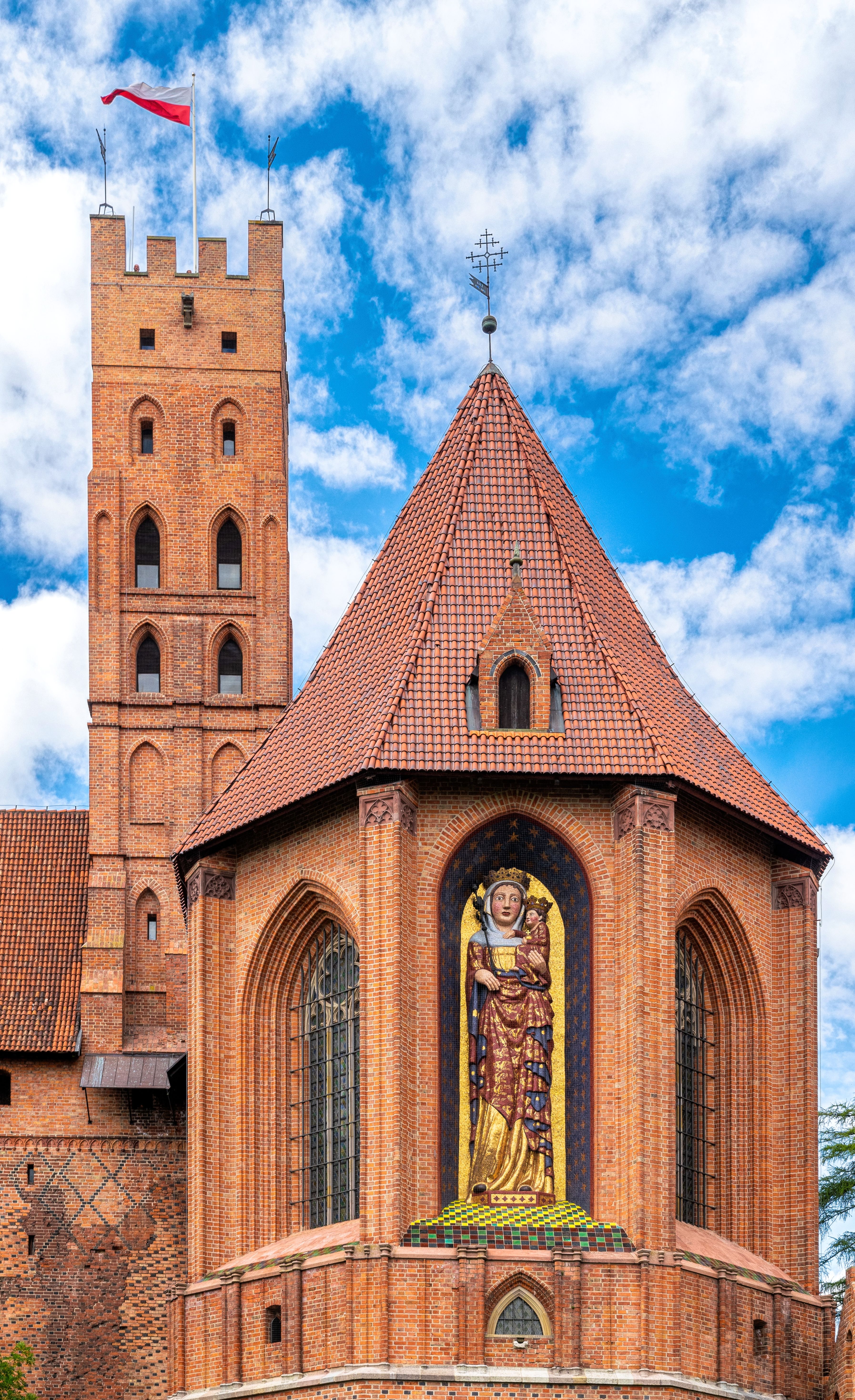Revealing the Secrets of a Medieval Madonna: Raman Spectroscopic Study Sheds Light on Wood Ash Glass Tesserae
In a recent study, a team of researchers used Raman spectroscopy to study wood ash glass tessera from Malbork Madonna, revealing two phases detected in tessera for the first time, leucite and pseudowollastonite.
In a new study published in the journal Spectrochimica Acta Part A: Molecular and Biomolecular Spectroscopy, a team of five researchers led by Zdeňka Čermáková (along with David Hradil, Petr Bezdička, Janka Hradilová, and Karolína Pánová) used Raman spectroscopy to better understand medieval art and craftsmanship (1). The study examined unique wood ash glass tessera that once adorned an eight-meter-tall statue of Madonna in Malbork, Poland, which was created at the end of the 14th century and subsequently destroyed during World War II (1).
Malbork Castle, capital of the Teutonic Order in Poland | Image Credit: © konoplizkaya - stock.adobe.com

Glass tesserae, often composed of natron and plant ash glass, have been discovered at historical sites across the former Roman and Byzantine empires. However, wood ash glass tesserae have been rare finds in the archaeological record. This research marks the first in-depth analysis of a wood ash glass tessera, shedding light on its production technology and origin (1).
The study reveals that the wood ash glass tessera was colored using cobalt, with a potential influence of copper, and opacified with calcium phosphate derived from burnt and powdered bones. Notably, the elemental composition of the tessera indicates its authenticity as a medieval artifact from the region north of the Swiss Alps. This finding offers a glimpse into the artistic practices and materials used during this period (1).
One of the most remarkable discoveries in this study is the identification of two phases in the glass tessera, leucite (tetragonal KAlSi2O6), and pseudowollastonite (monoclinic CaSiO3). Pseudowollastonite, a high-temperature phase, serves as an indicator of the temperature achieved during tessera production. The research also involved an analysis of the polymerization index of model glasses, further supporting the conclusions about production temperature (1).
This study provides valuable insights into historical glassmaking techniques and the cross-cultural exchange of knowledge. The findings suggest that the knowledge for opacification, such as the use of Ca-phosphate, was likely imported from the Mediterranean. However, the raw materials for the base glass preparation came from the region north of the Alps, highlighting the complex and interconnected nature of medieval craftsmanship (1).
The blue wood ash glass tessera from the Malbork Madonna has drawn attention because of its unique properties and composition. It stands as a testament to the artistic and technical achievements of the medieval era, and this study opens a window into understanding the ancient craftsmanship that created such awe-inspiring works of art (1).
In conclusion, the Raman spectroscopic study of wood ash glass tessera offers a glimpse into the historical and artistic past of Europe, enriching our knowledge of medieval production technologies and artistic practices. The research not only uncovers the secrets behind the colors and opacification of this magnificent glass tessera, but also highlights the intricate craftsmanship that has left its mark on history.
This article was written with the help of artificial intelligence and has been edited to ensure accuracy and clarity. You can read more about our policy for using AI here.
Reference
(1) Čermáková, Z.; Hradil, D.; Bezdička, P.; Hradilová, J.; Pánová, K. Unique wood ash Co-coloured glass tessera from mediaeval Madonna: Raman spectroscopic study of production technology. Spectrochimica Acta Part A: Mol. Biomol. Spectrosc. 2023, 303, 123183. DOI: 10.1016/j.saa.2023.123183
AI-Powered SERS Spectroscopy Breakthrough Boosts Safety of Medicinal Food Products
April 16th 2025A new deep learning-enhanced spectroscopic platform—SERSome—developed by researchers in China and Finland, identifies medicinal and edible homologs (MEHs) with 98% accuracy. This innovation could revolutionize safety and quality control in the growing MEH market.
New Raman Spectroscopy Method Enhances Real-Time Monitoring Across Fermentation Processes
April 15th 2025Researchers at Delft University of Technology have developed a novel method using single compound spectra to enhance the transferability and accuracy of Raman spectroscopy models for real-time fermentation monitoring.
Nanometer-Scale Studies Using Tip Enhanced Raman Spectroscopy
February 8th 2013Volker Deckert, the winner of the 2013 Charles Mann Award, is advancing the use of tip enhanced Raman spectroscopy (TERS) to push the lateral resolution of vibrational spectroscopy well below the Abbe limit, to achieve single-molecule sensitivity. Because the tip can be moved with sub-nanometer precision, structural information with unmatched spatial resolution can be achieved without the need of specific labels.